Abstract
A sensitive dye-binding assay was employed to study the hyaluronidase associated with temperate and virulent phages infected group A streptococci. Some enzyme was detectable in each purified phage preparation examined, but differences of several orders of magnitude separated the lower enzyme levels in virulent phages that required the addition of hyaluronidase for plaque formation and the higher levels in temperate phages that did not. Infection by virulent phage A25 was accompanied by the production of levels of hyaluronidase proportionate to the average burst size. Hyaluronidase was produced during infection by temperate phages at a much higher level than could be accounted for by the number of phage particles formed. The major portion of this hyaluronidase was free and apparently unassociated with phage or phage fragments. The phage-associated enzyme was tightly bound but could be released and solubilized by treatment with urea.
Full text
PDF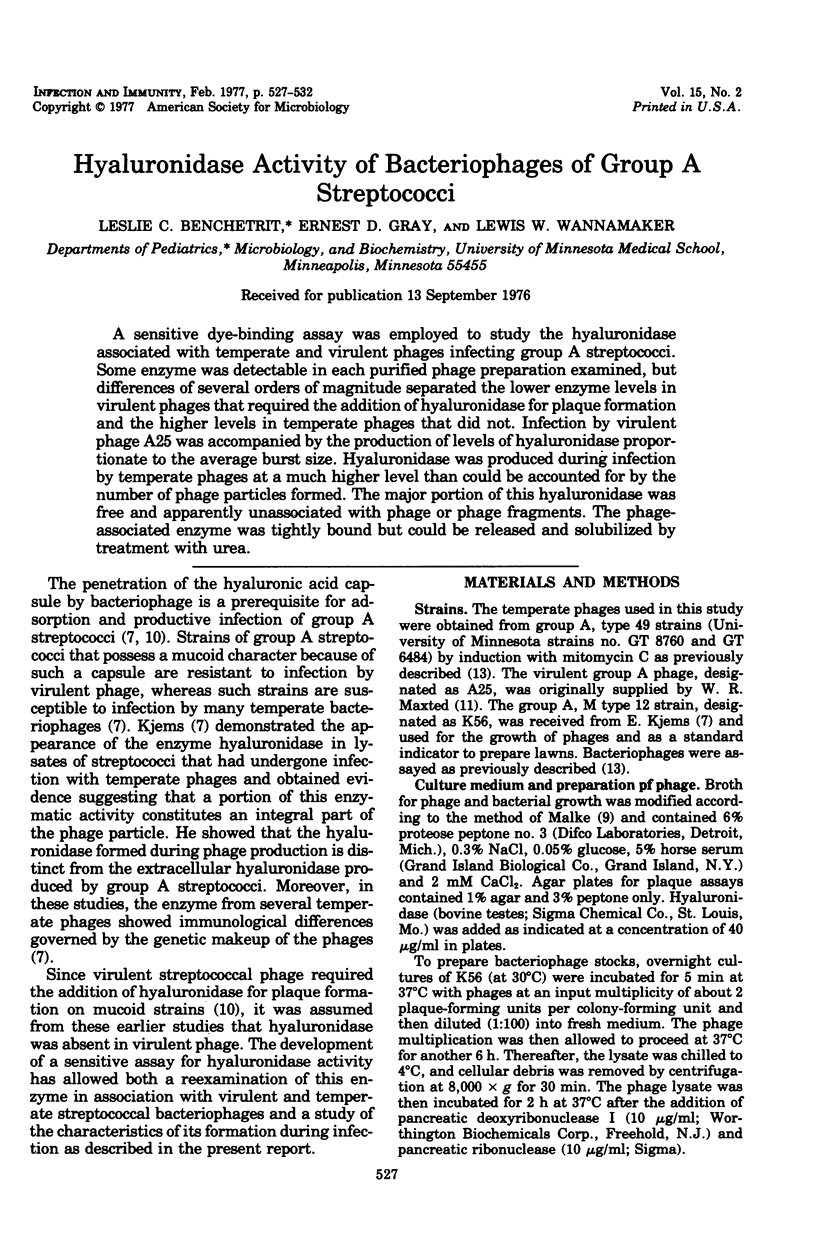
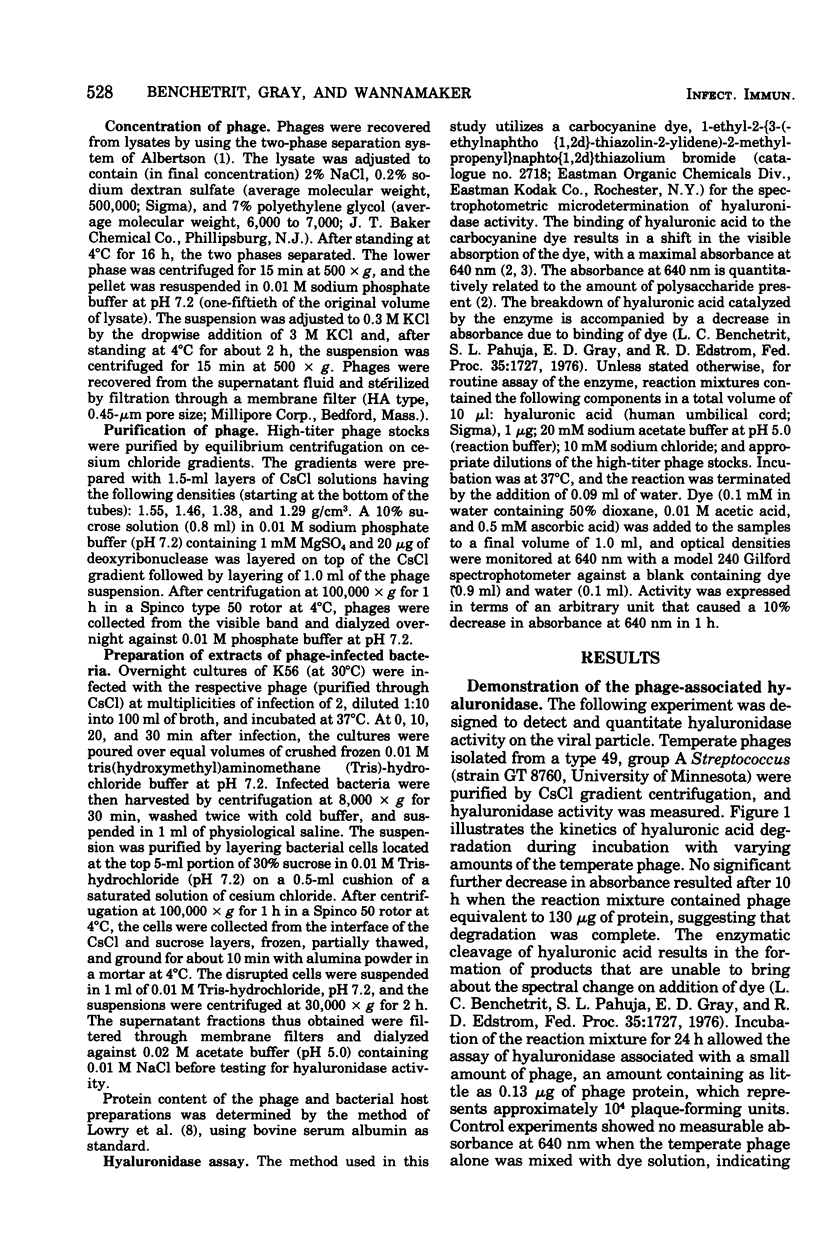
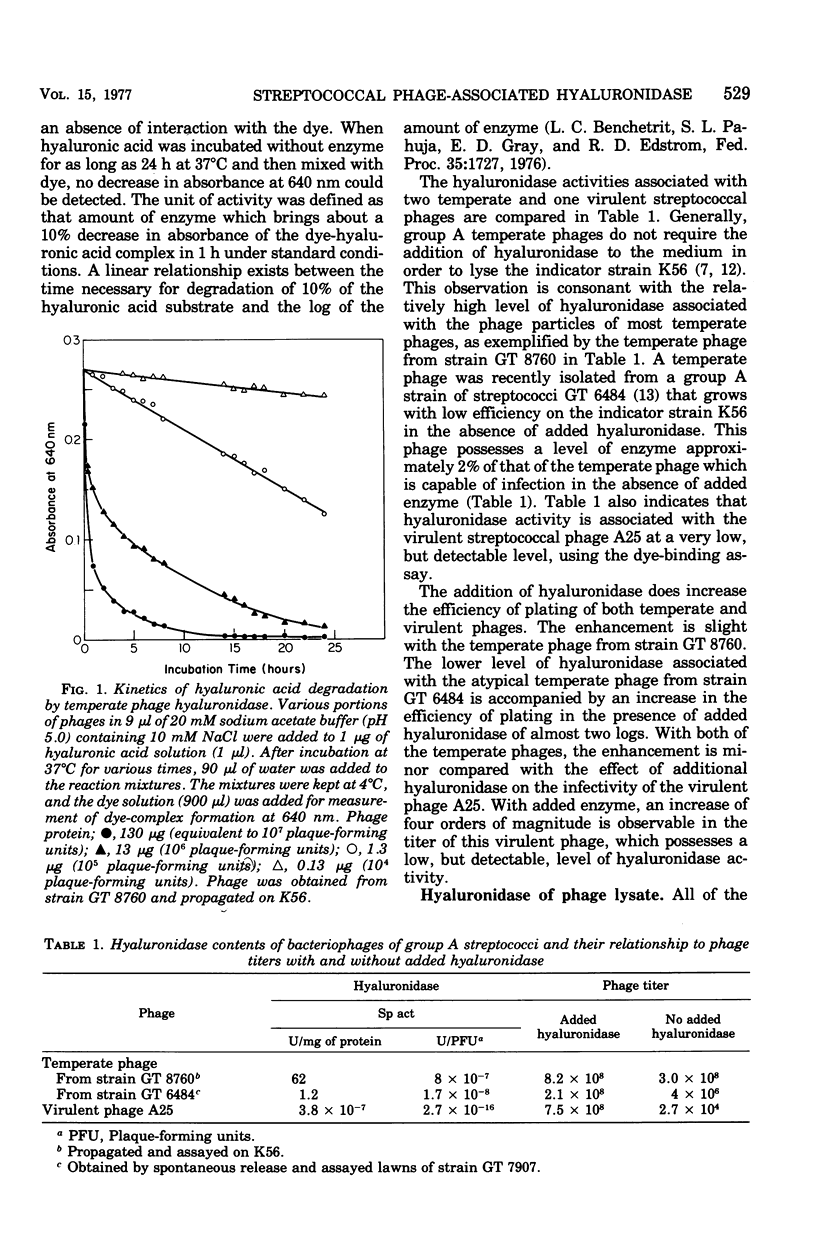
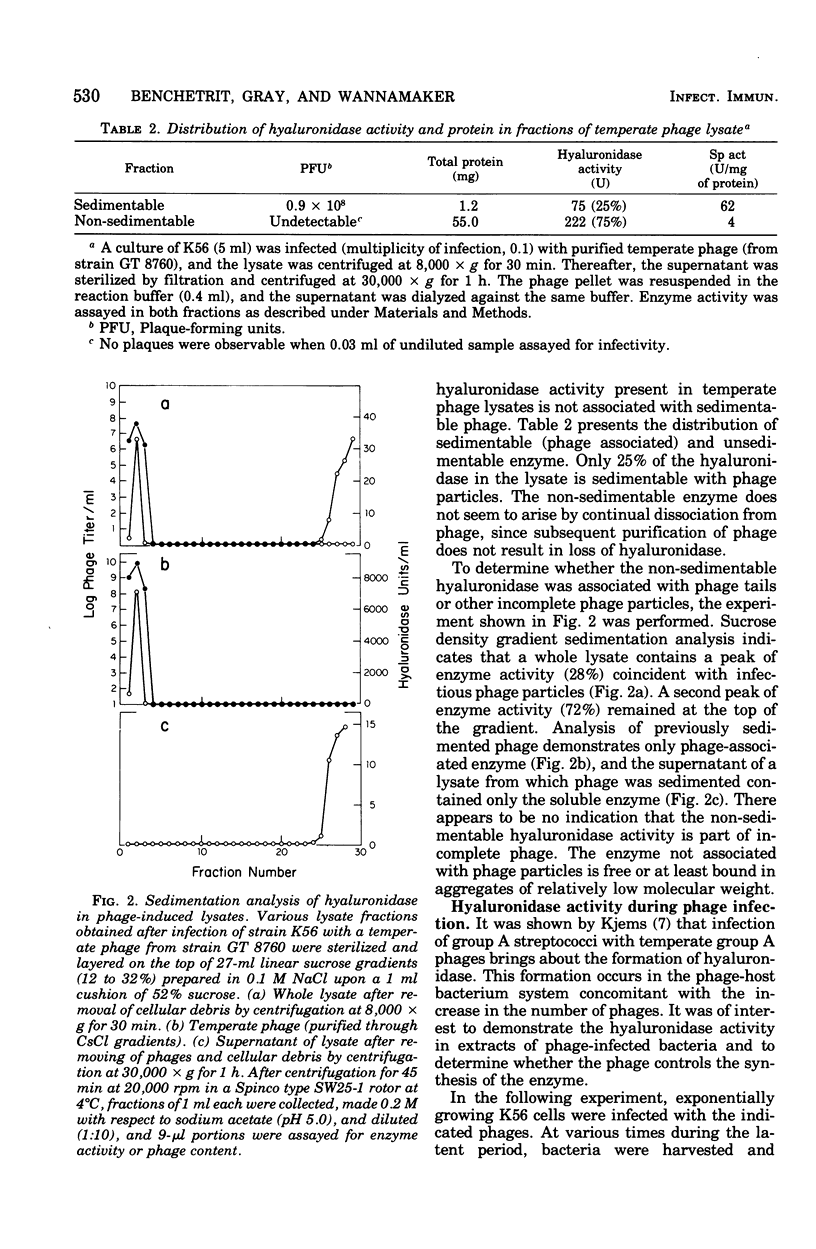
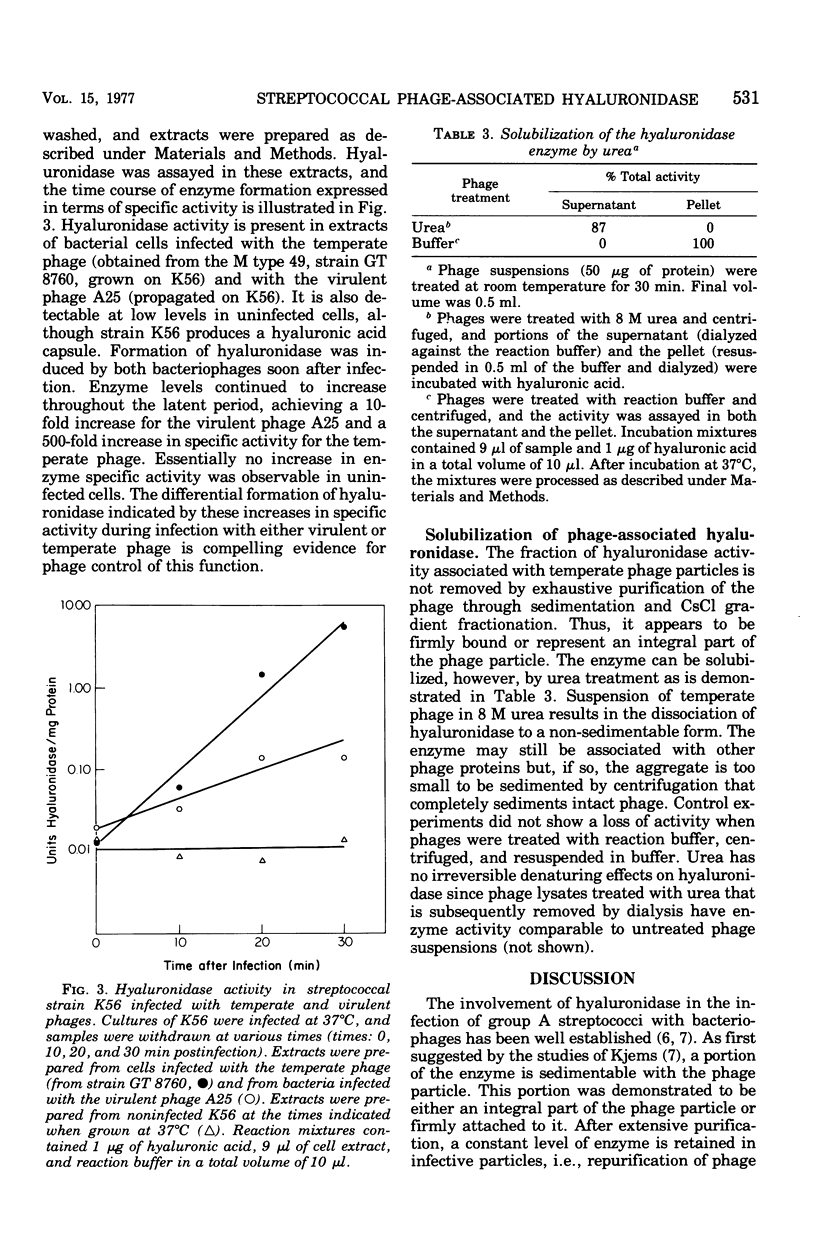
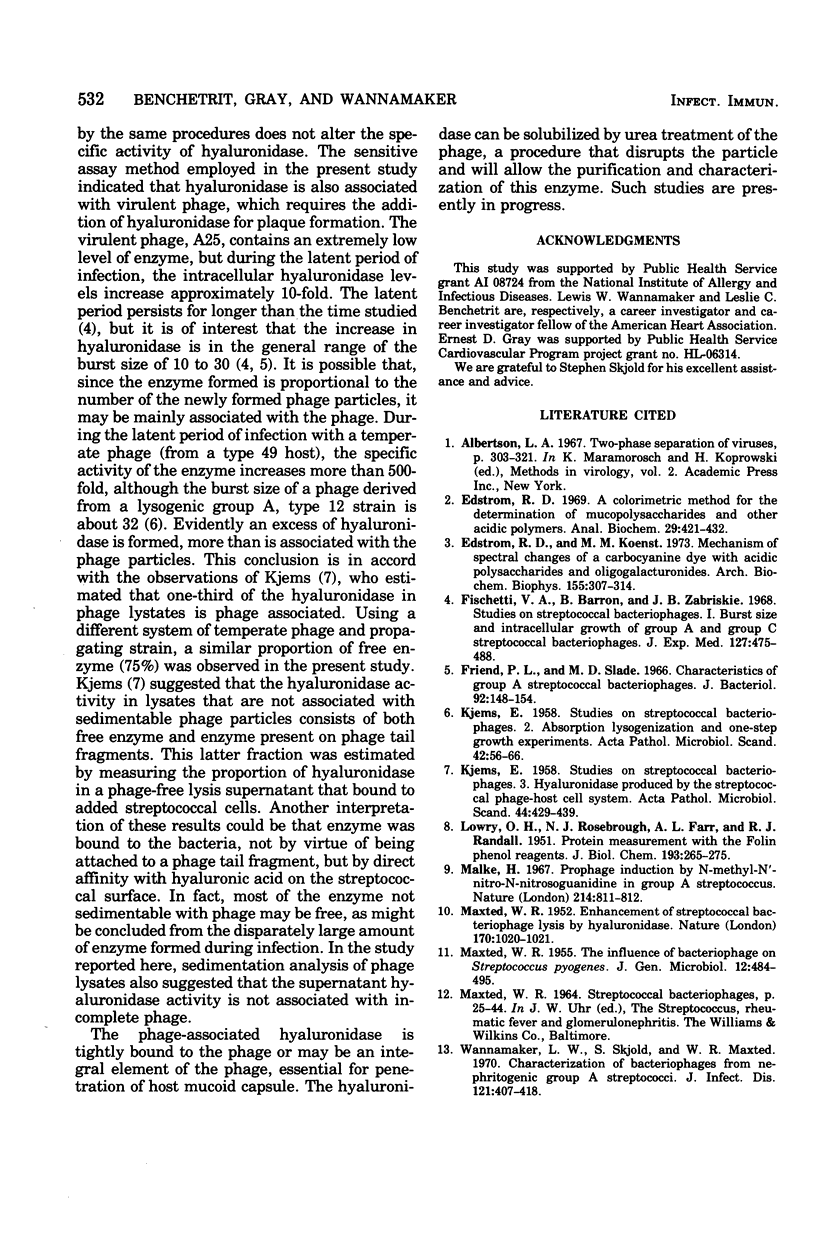
Selected References
These references are in PubMed. This may not be the complete list of references from this article.
- Edstrom R. D. A colorimetric method for the determination of mucopolysaccharides and other acidic polymers. Anal Biochem. 1969 Jun;29(3):421–432. doi: 10.1016/0003-2697(69)90327-3. [DOI] [PubMed] [Google Scholar]
- Edstrom R. D., Koenst M. M. Mechanism of spectral changes of a carbocyanine dye with acidic polysaccharides and oligogalacturonides. Arch Biochem Biophys. 1973 Apr;155(2):307–314. doi: 10.1016/0003-9861(73)90119-7. [DOI] [PubMed] [Google Scholar]
- Fischetti V. A., Barron B., Zabriskie J. B. Studies on streptococcal bacteriophages. I. Burst size and intracellular growth of group A and group C streptococcal bacteriophages. J Exp Med. 1968 Mar 1;127(3):475–488. doi: 10.1084/jem.127.3.475. [DOI] [PMC free article] [PubMed] [Google Scholar]
- Friend P. L., Slade M. D. Characteristics of group A streptococcal bacteriophages. J Bacteriol. 1966 Jul;92(1):148–154. doi: 10.1128/jb.92.1.148-154.1966. [DOI] [PMC free article] [PubMed] [Google Scholar]
- KJEMS E. Studies on streptococcal bacteriophages. 2. Adsorption, lysogenization, and one-step growth experiments. Acta Pathol Microbiol Scand. 1958;42(1):56–66. [PubMed] [Google Scholar]
- LOWRY O. H., ROSEBROUGH N. J., FARR A. L., RANDALL R. J. Protein measurement with the Folin phenol reagent. J Biol Chem. 1951 Nov;193(1):265–275. [PubMed] [Google Scholar]
- MAXTED W. R. Enhancement of streptococcal bacteriophage lysis by hyaluronidase. Nature. 1952 Dec 13;170(4337):1020–1021. doi: 10.1038/1701020b0. [DOI] [PubMed] [Google Scholar]
- MAXTED W. R. The influence of bacteriophage on Streptococcus pyogenes. J Gen Microbiol. 1955 Jun;12(3):484–495. doi: 10.1099/00221287-12-3-484. [DOI] [PubMed] [Google Scholar]
- Malke H. Prophage induction by N-methyl-N'-nitro-N-nitrosoguanidine in a group A streptococcus. Nature. 1967 May 20;214(5090):811–812. doi: 10.1038/214811a0. [DOI] [PubMed] [Google Scholar]
- Wannamaker L. W., Skjold S., Maxted W. R. Characterization of bacteriophages from nephritogenic group A streptococci. J Infect Dis. 1970 Apr;121(4):407–418. doi: 10.1093/infdis/121.4.407. [DOI] [PubMed] [Google Scholar]


